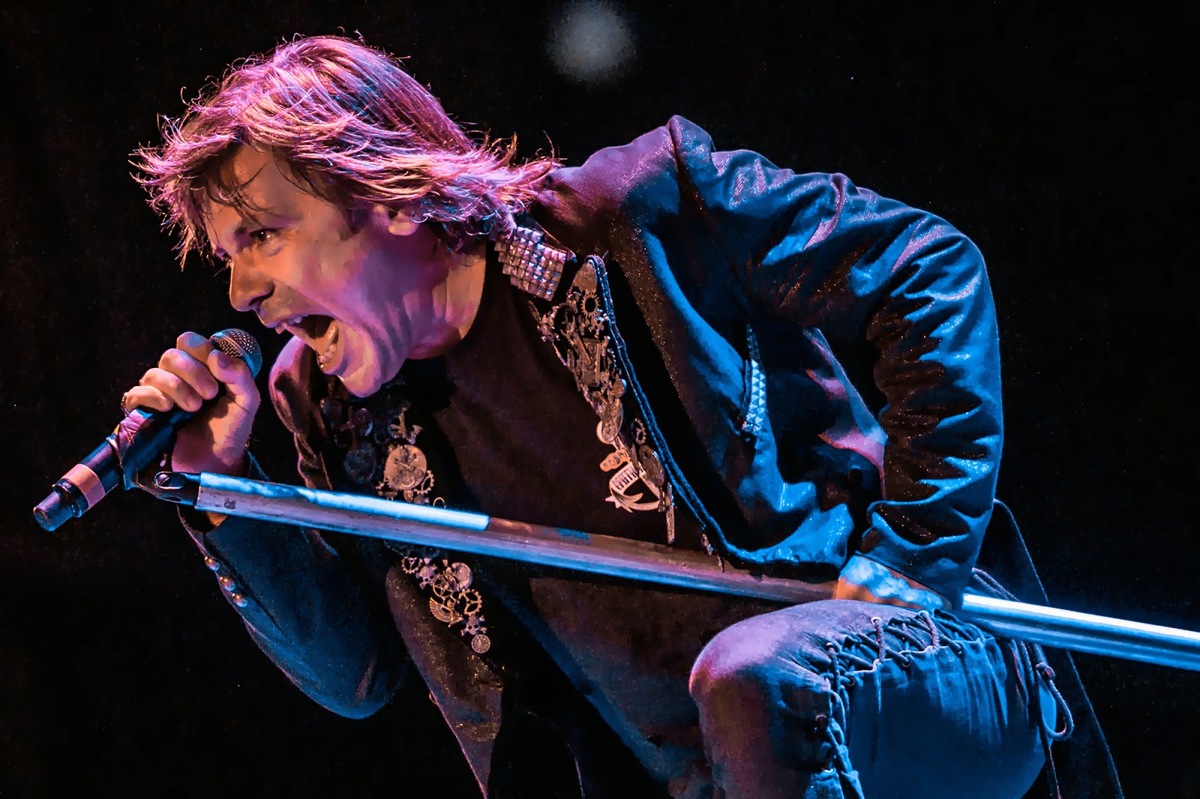Iron Maiden'The Number of the Beast' (1982) 'Iron Maiden' (1980)'Fear of the Dark' (1992) |
|---|
The History of Iron MaidenKnown for such powerful hits as "Two Minutes to Midnight" and "The Trooper," Iron Maiden are one of heavy metal's most influential bands. They're also one of metal's most enduring and distinctive acts, thanks to their melodic guitars, ambitious songwriting, powerhouse vocalist Bruce Dickinson, and iconic mascot Eddie. One of the first groups to be classified as "British metal," Iron Maiden helped set the rock scene for the '80s and inspired generations of subsequent bands, including Metallica, Dream Theater, Slipknot, In Flames, and Avenged Sevenfold. Despite a lack of radio airplay or mainstream media support, early allegations of Satanism, and a revolving lineup, they have remained consistently popular throughout their career. Iron Maiden were formed in 1975 in Leyton, East London by bassist Steve Harris, formerly of the band Smiler. The group's lineup was volatile during their early years, but eventually settled on drummer Doug Sampson, guitarist Dave Murray, and vocalist Paul Di'Anno in 1978. Late that year, this incarnation of the band recorded a four-song demo and circulated it to club owners and others involved in the London scene, including the group's soon-to-be manager Ron Smallwood. The demo's popularity led Iron Maiden to self-release it as 1979's The Soundhouse Tapes EP, which soon sold out its 5,000-copy run. After scoring a deal with EMI, the band enlisted a second guitarist, Dennis Stratton. Late in 1979, Sampson departed due to health issues and former Samson drummer Clive Burr took his place behind the kit. The group's self-titled debut arrived in 1980; though it was recorded in a hurry, it was nonetheless a U.K. hit due to the single "Running Free." Its 1981 follow-up, Killers, had a harder approach thanks in part to producer Martin Birch -- with whom the group worked until his 1992 retirement -- and also saw the replacement of Stratton with Murray's childhood friend Adrian Smith. Now established as a powerful and unique metal band, Iron Maiden experimented on their long-awaited 1986 album Somewhere in Time, incorporating synthesized bass and guitar and futuristic themes. They continued to expand their sound and subject matter with 1988's Seventh Son of a Seventh Son. Another concept album featuring the singles "The Evil That Men Do" and "The Clairvoyant," as well as the group's first use of keyboards, it was Maiden's most critically acclaimed record since The Number of the Beast. After that album's release, Smith and Dickinson worked on their own projects: Smith's album with his band ASAP arrived in 1989, while Dickinson's solo album, Tattooed Millionaire, appeared the following year. When Iron Maiden reconvened to work on a new album, Smith left over creative differences; ex-Gillan guitarist Janick Gers, who played on Tattooed Millionaire, joined the fold for 1990's No Prayer for the Dying. A return to the band's stripped-down sound of the early '80s, it gave Iron Maiden their first number one U.K. single with "Bring Your Daughter...To the Slaughter." At the end of the band's 1991 tour, Dickinson expressed his desire to leave and work on his own music. However, he recorded another album, 1992's Fear of the Dark, and toured with the band, ultimately leaving in 1993. That year, two live albums were released: A Real Live One, which focused on their contemporaneous hit singles, and A Real Dead One, which featured Maiden's classic songs. Iron Maiden remained reinvigorated throughout the 2000s, touring and recording almost as consistently as they did in the '80s. They reunited with Shirley for 2003's critically acclaimed Dance of Death, which was inspired by battles ranging from the conquering of a 13th century Cathar stronghold ("Montségur") to a notable World War I campaign ("Paschendale"). The Rainmaker EP, as well as the live DVDs History of Iron Maiden, Pt. 1: The Early Days and Raising Hell, followed in 2004. Sanctuary put out the two-disc The Essential Iron Maiden in 2005 to coincide with their gig co-headlining an Ozzfest tour with Black Sabbath, which the band left due to a series of confrontations with Ozzy's wife/manager, Sharon. Another live set, Death on the Road, appeared in September 2005, shortly before Iron Maiden returned to the studio to work on their 14th album. The results were 2006's A Matter of Life and Death, the group's first album to enter the Top Ten of the Billboard 200. Three years later, Iron Maiden released the soundtrack for the film Flight 666, a documentary/concert film recorded in 16 different cities during Maiden's first leg of their 2008 Somewhere Back in Time World Tour, which saw the band traveling in a customized Boeing 747 (called Ed Force One) flown by Dickinson, who is also a licensed pilot. |
Group Founders |
Other Albums |



